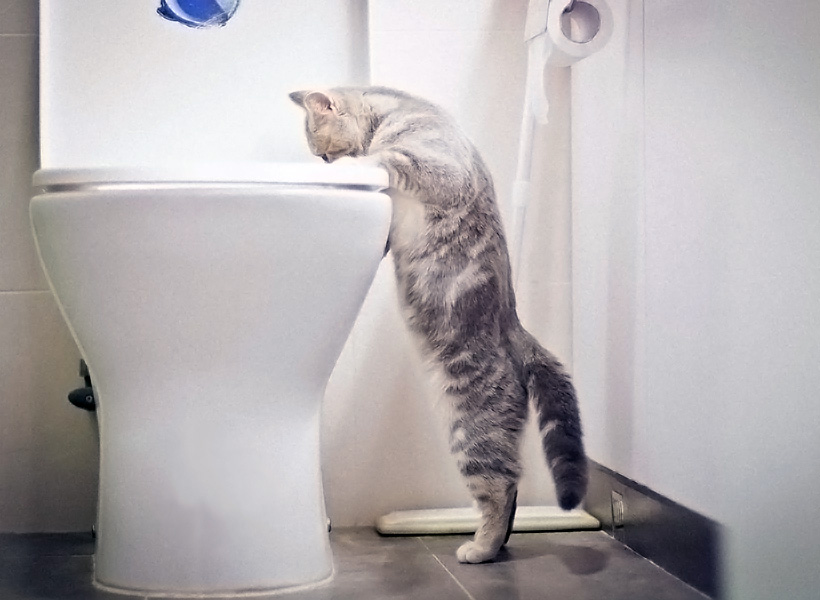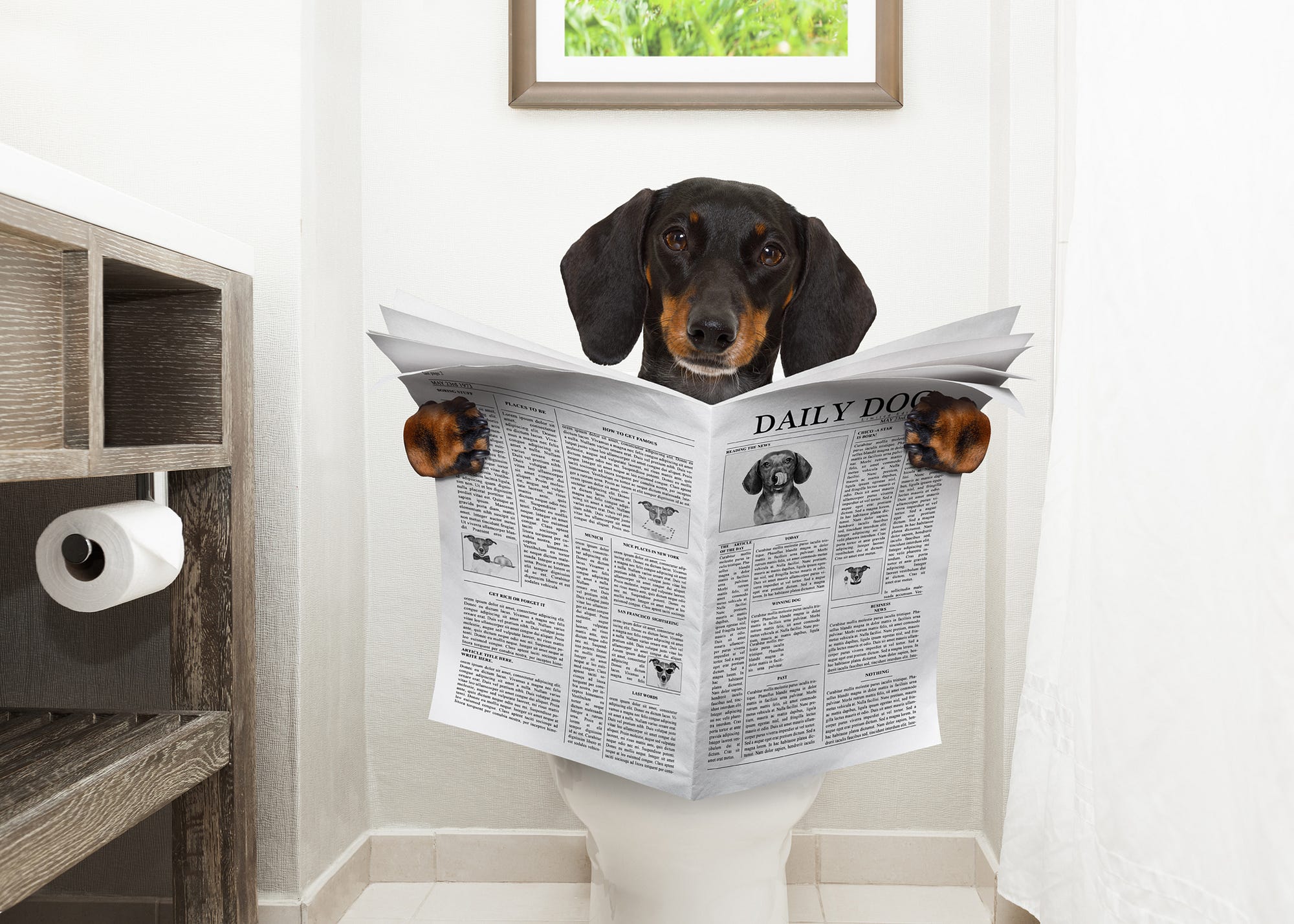Have you been searching for know-how involving Don't Flush Your Pets Poo Down The Loo, Vet Warns?

When it concerns getting rid of waste, particularly animal waste, lots of people commonly turn to the hassle-free choice of flushing it down the toilet. However, this seemingly very easy service can have severe effects for the environment and public health. In this short article, we'll check out why flushing pet waste down the bathroom is a bad concept and provide alternative approaches for correct disposal.
Introduction
Appropriate garbage disposal is important for preserving ecological sustainability and public health. While it may appear safe to purge animal waste down the toilet, it can cause different concerns, both for the environment and human health.
Dangers of flushing pet waste
Environmental impact
Purging pet waste introduces hazardous microorganisms and virus into waterways, which can negatively impact water environments. These microorganisms can infect water resources and harm aquatic life, interfering with fragile ecological communities.
Public health issues
Pet waste consists of hazardous bacteria such as E. coli and Salmonella, which can position significant health threats to human beings. Purging animal waste down the bathroom can pollute water supplies, bring about the spread of diseases and infections.
Alternatives to flushing
As opposed to purging pet waste down the commode, there are several different disposal techniques that are much more environmentally friendly and hygienic.
Composting
Composting animal waste is an environment-friendly way to dispose of it. By composting, organic matter is broken down into nutrient-rich soil, which can be used to feed gardens and plants.
Garbage dump disposal
Taking care of animal waste in a landfill is one more alternative. While not as eco-friendly as composting, it is a more secure alternative to flushing, as it avoids the contamination of water sources.
Animal garbage disposal systems
There are specialized animal garbage disposal systems offered that safely and hygienically take care of animal waste. These systems frequently use enzymes to break down waste and eliminate smells.
Actions to proper pet garbage disposal
To guarantee appropriate disposal of animal waste, follow these steps:
Scooping and landing waste
Regularly scoop and bag pet waste making use of naturally degradable bags. This prevents waste from contaminating the setting.
Utilizing assigned waste containers
Dispose of bagged animal waste in assigned waste bins, such as compost containers or land fill containers. Avoid flushing it down the toilet at all expenses.
Cleansing litter boxes and pet locations routinely
On a regular basis tidy can and pet areas to stop the buildup of waste and bacteria. Use pet-safe cleaning products to maintain health.
Benefits of correct disposal methods
Embracing proper disposal techniques for animal waste uses a number of advantages:
Lowered environmental pollution
Proper disposal techniques reduce the threat of environmental pollution, protecting rivers and environments from contamination
Reduced threat of water contamination.
By staying clear of flushing pet waste down the commode, the danger of water contamination is significantly reduced, securing public health.
Improved hygiene and health
Correct disposal approaches advertise far better sanitation and hygiene, creating a safer environment for both people and website animals.
Final thought
In conclusion, purging pet waste down the toilet is harmful to the setting and public health. By taking on different disposal approaches and complying with appropriate waste monitoring methods, we can lessen the negative impact of animal waste and contribute to a cleaner, much healthier world.
Can You Flush Dog and Cat Poo Down the Toilet?
Cat poo often contains a highly resistant parasite called Toxoplasma that can infect people and animals. Many municipal water treatments do not have equipment or processes to kill it (as they're designed for humans who don't poop this parasite!) meaning it would pass into our waterways, posing a risk to humans and animals alike. It can even prove fatal for some wildlife.
Many studies have shown that so called biodegradable and 'flushable' products, including flushable poo bags, don't actually disintegrate as claimed. This is primarily because they're designed to biodegrade in warm water, not cold water, like that in our toilets. In fact, 'flushable' poo bags have historically caused $8 million in blockages in Australia so it's not recommended to try flushing these bags, despite what they claim! The same goes for cat litter. Our old sewage systems are only designed for the 3 P's - Pee, Poo and Paper and can easily get blocked if anything else is thrown in.
So what about dog poo (without the bags)?
Again, dog poo is considerably different to human poo. It contains twice the harmful bacteria and viruses and also contains unique parasites. One particular parasite, Toxocara, is highly resistant to high temperatures. Our water treatment facilities are not designed to deal with dog poo pathogens such as this so there's a chance that they will pass through and contaminate our waterways if flushed down the toilet. Toxocara can also infect humans, causing blindness in children and infect animals so presents a public health risk. This is why many waste water treatment plants advise against flushing any type of pet poo down the toilet, due to the extra pathogens it contains.
Dog and cat poo can also contain medicines, such as parasite treatments, which can be highly toxic to aquatic life and may threaten the stability of entire ecosystems. Medicines are much trickier to clean from sewage and will likely pass unchanged into our waterways.
Scalability
There's also the question of whether flushing pet waste could really ever be a viable widespread solution. Could our old sewage systems really cope with the additional faeces of 12 million dogs and 10 million cats if everyone starting flushing their pet's poo? It's unlikely!
We contacted Wessex Water and South West Water on the matter of flushing pet poo and both gave different answers. The former advised it was safe to do so, while the latter strongly advised against it! This may be due to their different treatment processes which can vary depending on location. However both water companies agreed that you should never flush any 'flushable' products down the toilet, even if they claim to be safe to flush as in real world this just simply isn't the case and they often cause costly blockages. They emphasised that only the three P's - Poo, Paper and Pee should ever be flushed down the toilet.
Conclusion
In summary, never flush biodegradable or 'flushable' poo bags or cat litter down the toilet. We also feel it's safer to avoid flushing cat and dog faeces, due to it's pathogenic content, the unknown risks of parasite treatments and medicines on wildlife and the wider environment and due to the inconsistent advice. Dog poo may be disposed in a well managed compost or wormery, rather than down the toilet. If you are still really keen to flush pet poo, make sure you speak to your local water treatment plant before you do so, as they may or may not have the treatments to safely process it.
If you dispose of your pet's waste in general waste then ensure to do so in the most eco-friendly way by using recycled poo bags such as Award Winning ReSEAcled poo bags. Experts advice it's better to re-use waste that was already destined for landfill or incineration rather than using poo bags made form virgin materials because this helps reduce plastic production, reduce plastic pollution and cuts carbon emissions and energy use. ReSEAcled poo bags are also the world's first Plastic Negative poo bags, removing 5 times as much plastic from the environment than they use! Click here to learn more.
https://petimpact.co.uk/blogs/poo-revolution/can-you-flush-pet-poo-down-the-toilet

Do you really like more info about ? Try leaving a comment further down. We will be delighted to find out your feelings about this write up. We are looking forward that you come back again later on. Do you know another individual who is involved in the topic? Do not hesitate to promote it. We enjoy your readership.
Click For More Information